Mackie CR3 Creative Reference Multimedia Monitor Review
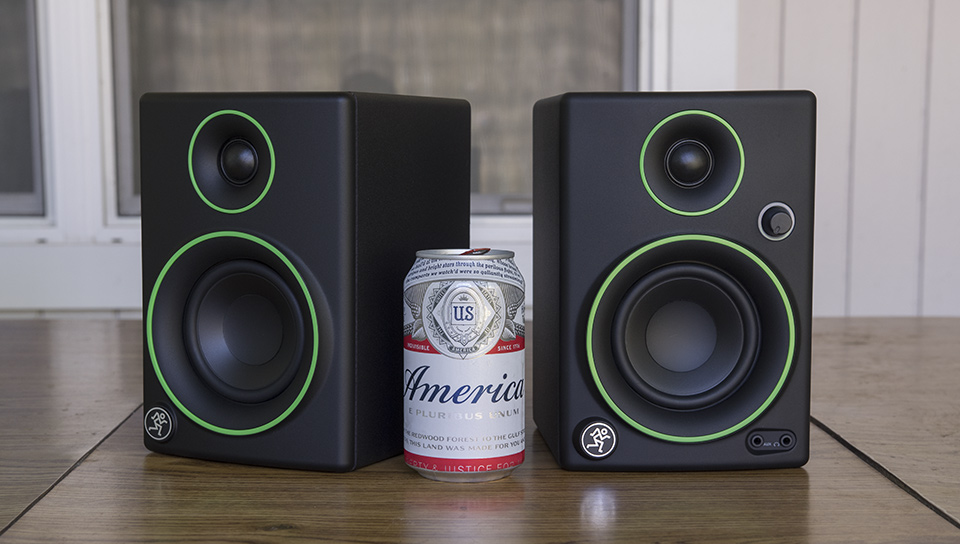
Mackie knows what they are selling. Instead of calling the CR3's studio monitors, they are "Multimedia Monitors." I'm guessing this branding is also supposed to serve as a warning label for those looking for quality sound. Well people are ignoring the warning in droves and this set of active speakers is the number one seller in the studio monitor category on Amazon, so let's see what people are getting when they buy a multimedia monitor.
Component Overview:
Tweeter
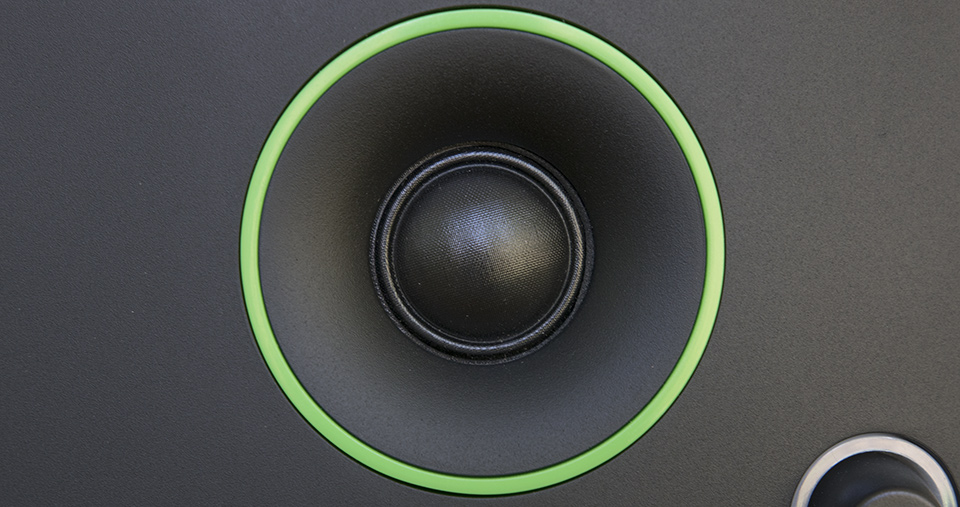
The tweeter is a nice looking 3/4 inch textile dome. There is a tiny waveguide built into the plastic baffle cover and a slightly raised ultra green ring for styling and possible edge diffraction in the upper treble.
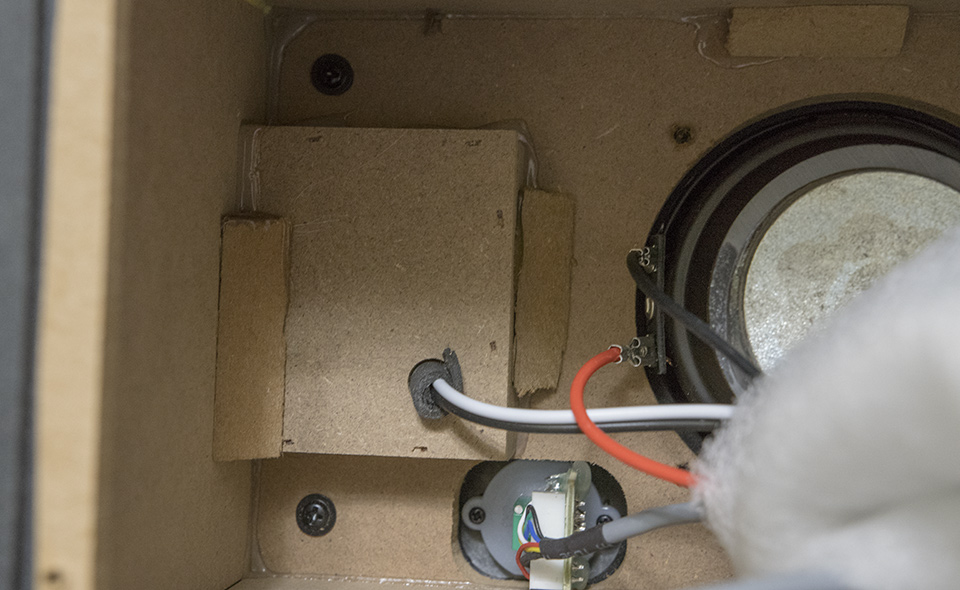
The back of the tweeter is covered by this makeshift enclosure, with staples and hot glue holding it together. I'm not sure why Mackie would go to the trouble, but I'm guessing it is there to stop air leaks through the front baffle.
Woofer
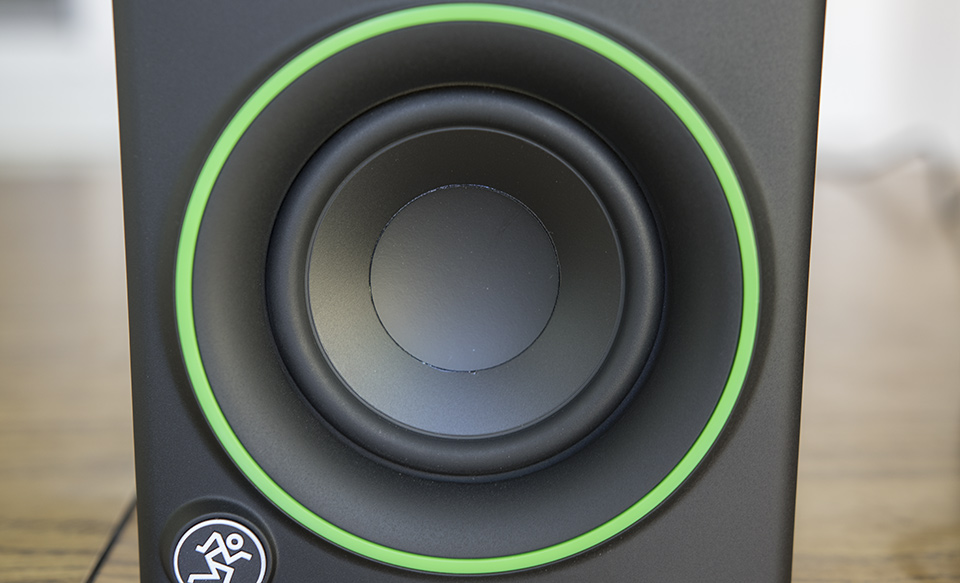
The Woofer is about 3.5 inch and appears to a poly cone. The inverted dust cap is odd. CR3's have a very delicate exposed dome with no grill, but still inverted the dust cap on the woofer. Another thing that caught my eye about the woofer placement is the recessed mounting of the woofer. It is way back in the baffle with its own waveguide of sorts.
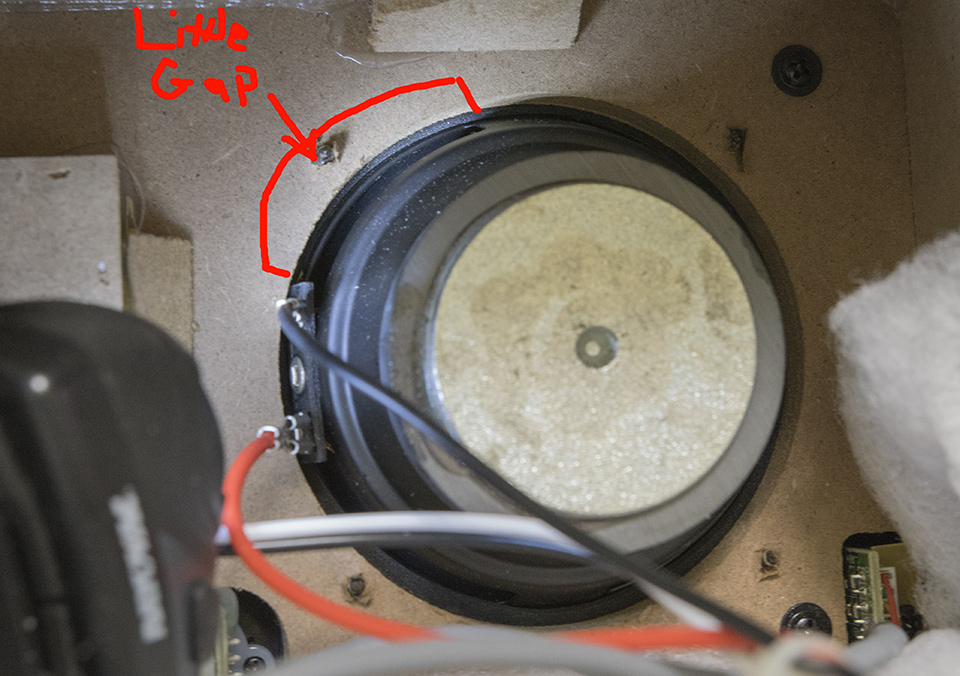
On the back of the woofer we can see some other issues. These little slots on the basket of the woofer are the only vents for the back wave of the driver. There is only a small bit of clearance between the baffle and these vents. I'm thinking maybe this kind of back pressure would lower the FS of the driver(making the cone seem heavier and play deeper), but that is just my own unverified ramblings.
Port
The port is 1.25 inch in diameter and 3.5 inches deep. Seems pretty firmly attached, but is tuned higher than most other speakers this size I've tested. I'm not expecting deep bass.
Cabinet
The outside of the speaker is a nice matte textured vinyl wrap that matches well to the matte black abs plastic baffle cover. It looks pretty sharp and well built.
The baffle cover over MDF is a bit strange. JBL had success with running just a thick plastic baffle, so I see no reason why Mackie felt the need to go with wood behind it. Not only that there are voids between the baffle and the wood, and the front still rings like plastic when you tap it. I guess I should give Mackie props for trying to make a good box, but the whole baffle and driver mounting appears to be thrown together. It's over engineered in some ways, and under in most ways. I guess I would call it rigged if I had to classify the end product.
Amplifier
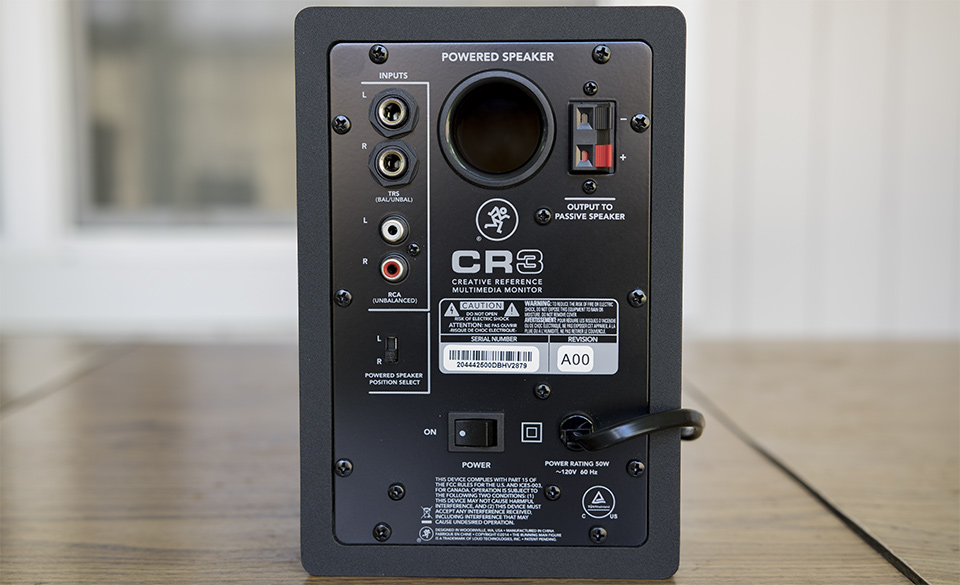
There is a plate amp on the back of one of the speakers. For rear inputs the amp has balanced and unbalanced connectors, but no way to switch to a lower sensitivity setting for using pro gear. Conveniently the speakers have a switch for placing the powered speaker either as the left or right. Another nice touch is the speaker does not have a wall wart power supply, but sadly the power cord is not removable.
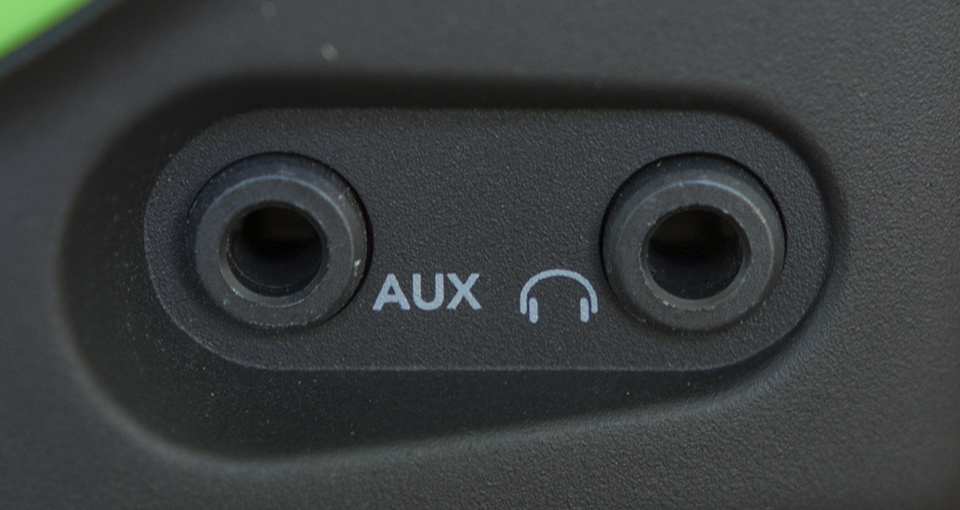
There is a front aux port for mp3 players or whatever kids use these days to listen to music. Also, a headphone output port if you would like to run your low level headphone signal through the gauntlet of possible electrical noise inside of the speaker.
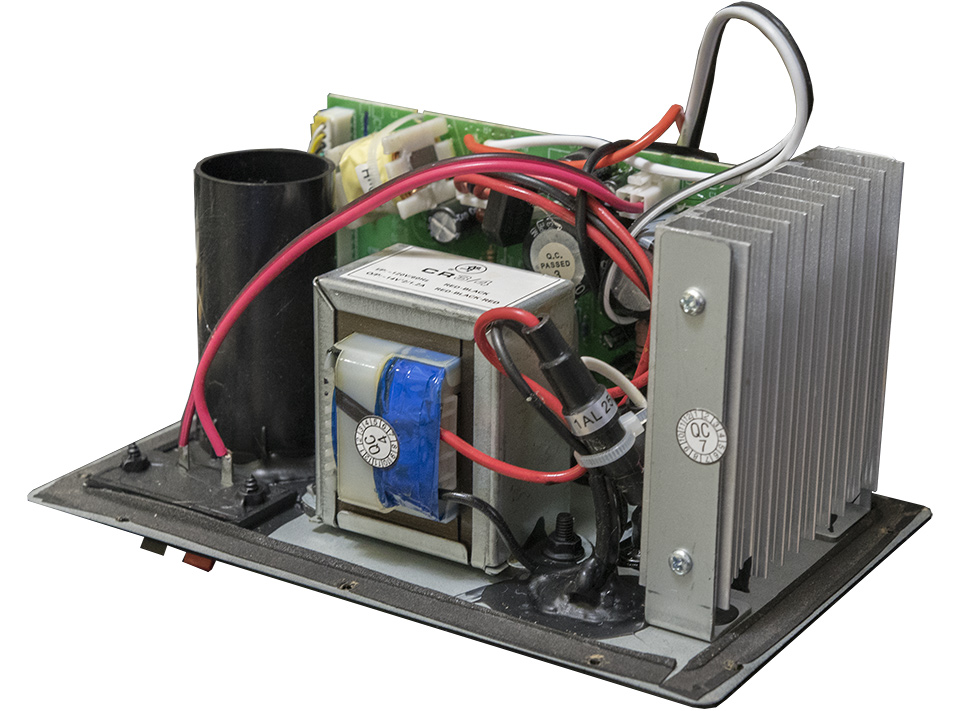
Looking at the board we can judge based on the size of the heat sink that this is a class A/B amp, and that big heat sink does get stupid hot. The power transformer looks like something from a largish wall wart has been screwed into the amp back plate. There are some smoothing caps for the power supply and overall I would rate this as a pretty good design for an amp in a cheap speaker. Note this is a 2 channel amp, and the speaker is not biamped.
Crossover
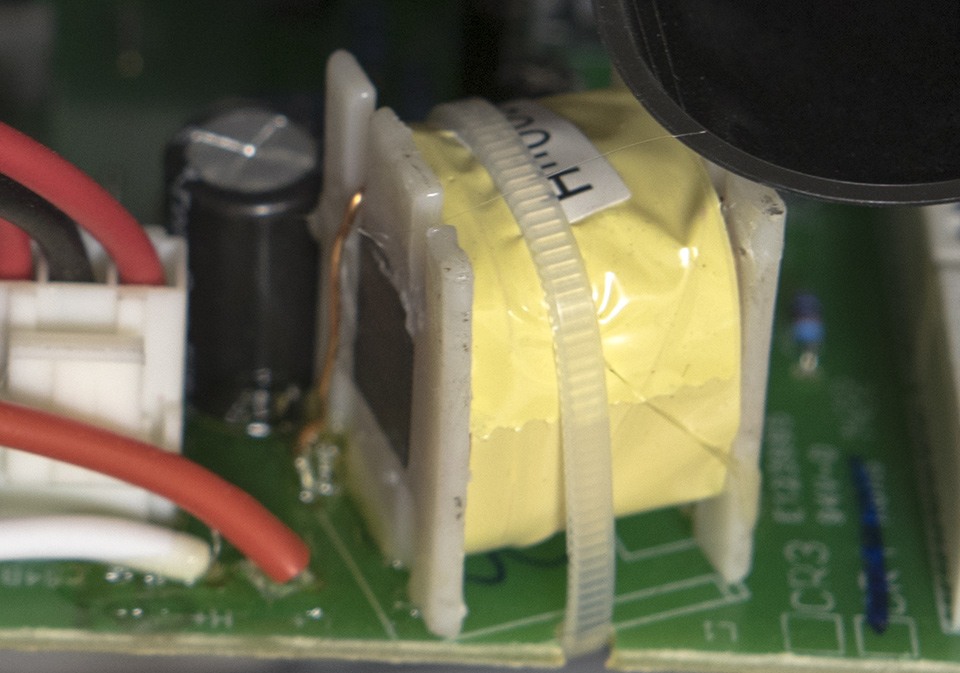
I could not get the passive speaker open, so I spent a good bit of time following traces on the amp board trying to find the crossover and eventually nailed it down to this coil and cap. From what I can tell the tweeter has a 2nd order crossover, and the woofer is just running wild without a crossover at all. I did see some resistors, but they were tiny through hole resistors, and I doubt they were used in the crossover.
Stands
The CR3's come with little foam pads to stop vibrations from getting transferred to the desk surface. I used them in conjunction with my stands, but did not find them to be anything special.
Grills
No grills, the bright colors around the drivers serve as enough of a warning for people to keep their distance.
Listening Notes:
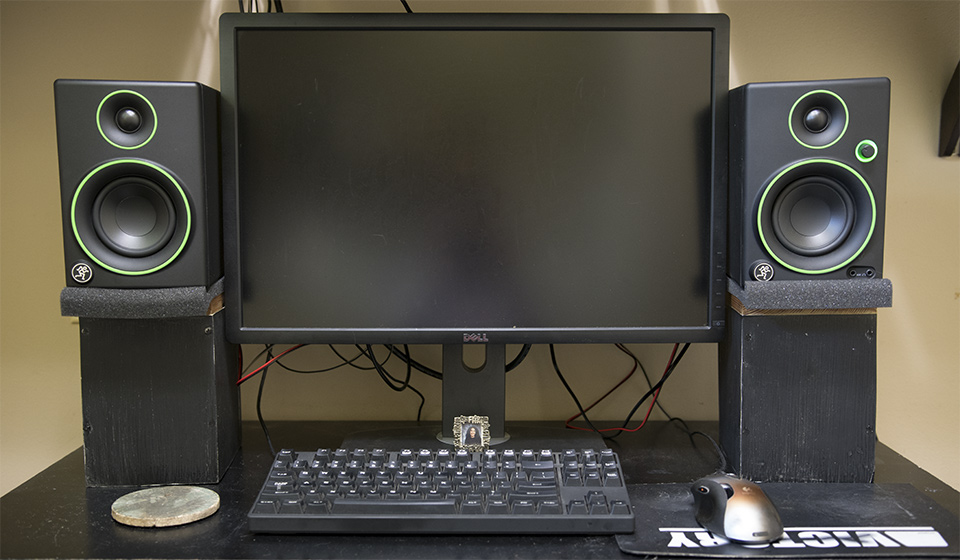
Let's start with the obvious. There is no way I would ever suggest anyone try to mix sound with Mackie CR3's or used them in any kind of professional environment.
Upper bass is honking, and there is no lower bass.
Treble is a little hot, but almost balances out with the elevated bass.
Almost sounds like a bad studio monitor.
Cone breakup sounds are really obnoxious on the CR3's making everything sound harsh.
The volume knob has an pretty bad imbalance at the beginning range. It smoothes out after a quarter turn.
Lack of bass extension, Upper bass bloom, and cone breakup are the show stoppers on this speaker.
Measurements:
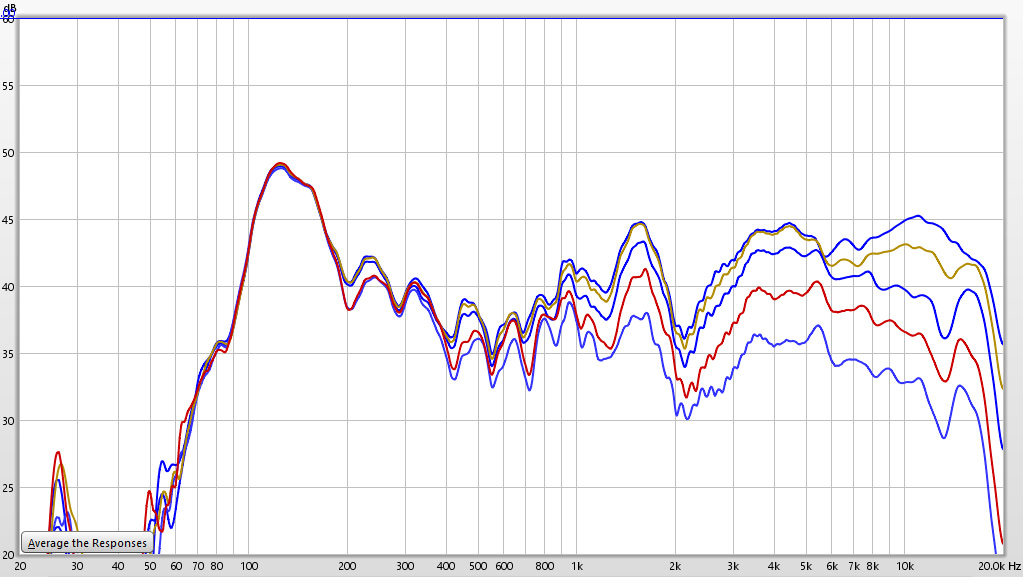
Took the speakers outside to measure because the high tuning on the rear port was giving my room hell. The top measurement is on axis, and each one below that is in 15 degree increments until I reach 60 degrees off axis with the bottom measurement.
Starting from left to right we see no bass until 80Hz, and then a massive bass boost tapers into the midrange. A steady climb into the treble with what looks like driver cancelation from the lack of a crossover on the woofer at 2kHz. The rest of the treble does fine and continues out at the same amplitude until it runs out of steam around 18kHz.
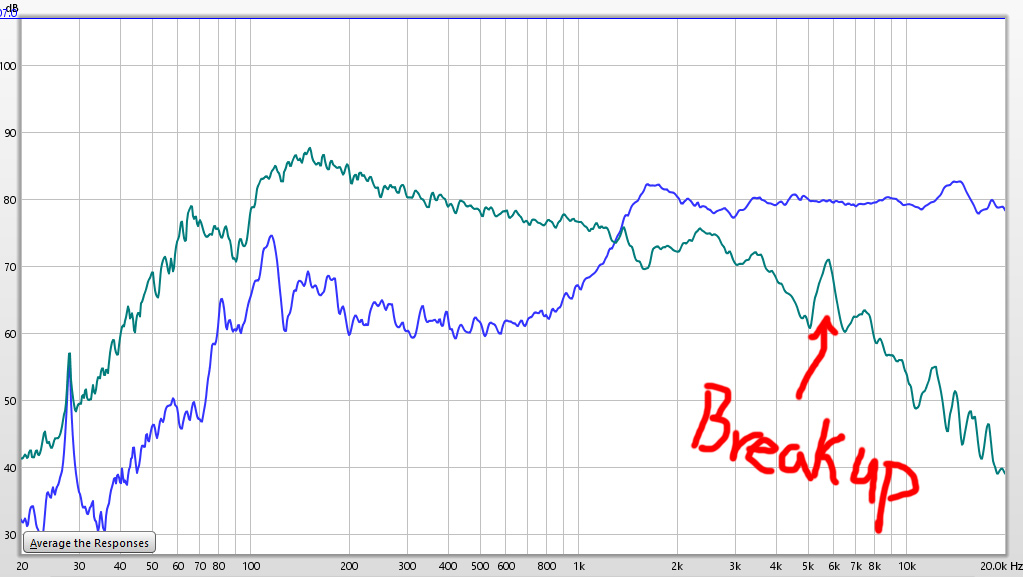
These are close mic measurements of the drivers. This is useful for finding the crossover slopes, cone breakup, and seeing what the drivers are trying to do before they have to deal with the baffle or interference.
The top left green line is the woofer's response. We can see it is happy to just keep on chugging all the way out to 10k before dropping 10dB. Also clear as day there is some ringing at 5.5kHz which is in the middle of the most sensitive zone for hearing.
The tweeter seems pretty happy to its job, but crosses over really late at a pretty steep slope.
DSP Correction:
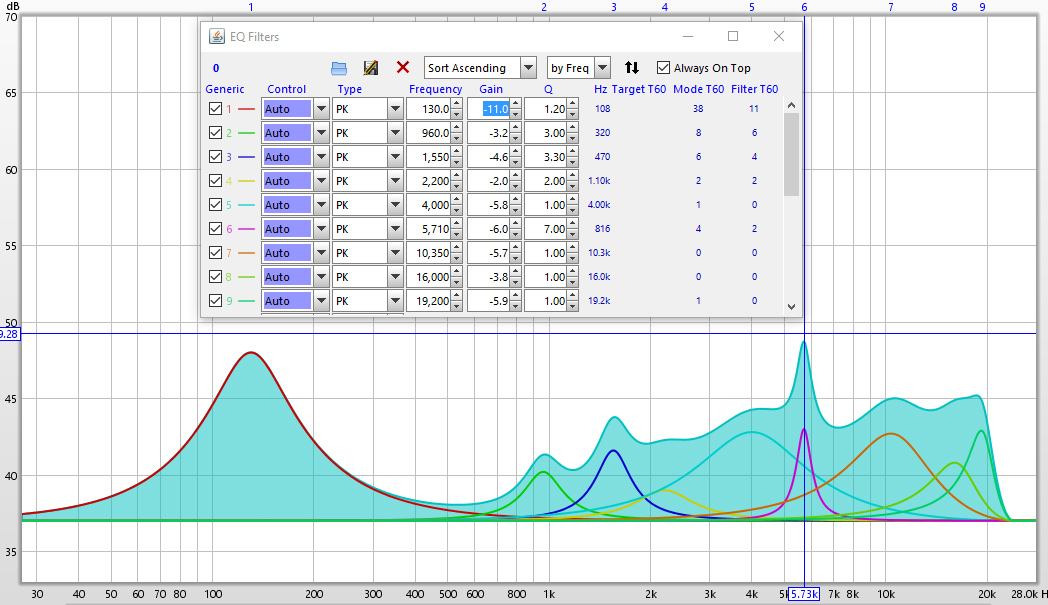
Cut the upper bass, but when trying to add actual bass boost the driver started bottoming out very early with loud clanking sounds. The treble got cut, but I left it a little sparklely to offset the massive spike correction I did to remove the cone breakup distortion.
Corrected Listening Notes:
Treble sounds alright now, but upper bass still honks a little in the 110Hz range.
Final Thoughts:
The Mackie CR3 speakers are not very good. I would not recommend them for any wannabe professionals. After correction the Mackie CR3's do pretty good with treble, but don't play low and have issues with mid bass performance. If you already have these speakers and don't want to mess with the DSP, crossing them over to a subwoofer and plugging the ports is probably a good idea.
Click here to get the DSP correction file for the Mackie CR3.
Click here to buy the Mackie CR3 Multimedia Monitors
Check out the system finder to see what I recommend.
Other content you may like:
- Vanatoo Transparent One Review - Software update brings new standard of performance!
- Lone Star Audio Fest 2018 - Staying up late, drinking too much, smoking like chimneys!
- Andrew Jones goes back the be begining, ELAC B5.2 Debut 2.0 Review is up!
- New Scores for all reviewed speakers - Compare and sort for fun!
- Creative Sound Solutions DIY Solution for the high end - CSS Criton 1TD v2 review is up!
- Dayton Makes a Budget Desktop speaker with a crossover - Dayton Audio MK402 review is up!
- Smaller than small, deeper than deep - iLoud Micro Monitor review is up!
- Vanatoo's new speaker, The Transparent Zero review is up!
- SVS Prime Bookshelf Review is now available for your viewing pleasure
- ELAC A-Stock UB5 Listening Impressions are up!
- 30 years in the making, the ancient Bose 901 finally gets measured - The Bose 901 review is up!
- Lock and load, we are hitting the bottom of the barrel with both barrels - The Logitech z313 review is up!
- Bulletproof speakers... No, it's just the B&W 686 S2 Review!
- Declare independence from the British sound! - The KEF Q300 review is up!
- Recommended System Finder - Just in time for the Holidays!
- JBL LSR308 Studio Montor - Super Massive Epic Review!
- Two years after starting this site I finally get around to talking about my stereo.
- Small and cheap speakers transform into retarded and good... Micca COVO-S Review!
- AMT tweeter on a B652? The Dayton B652-AIR is reviewed for great justice!
- JBL LSR305 Studio Monitor Review!
- Zu Essence Review!

